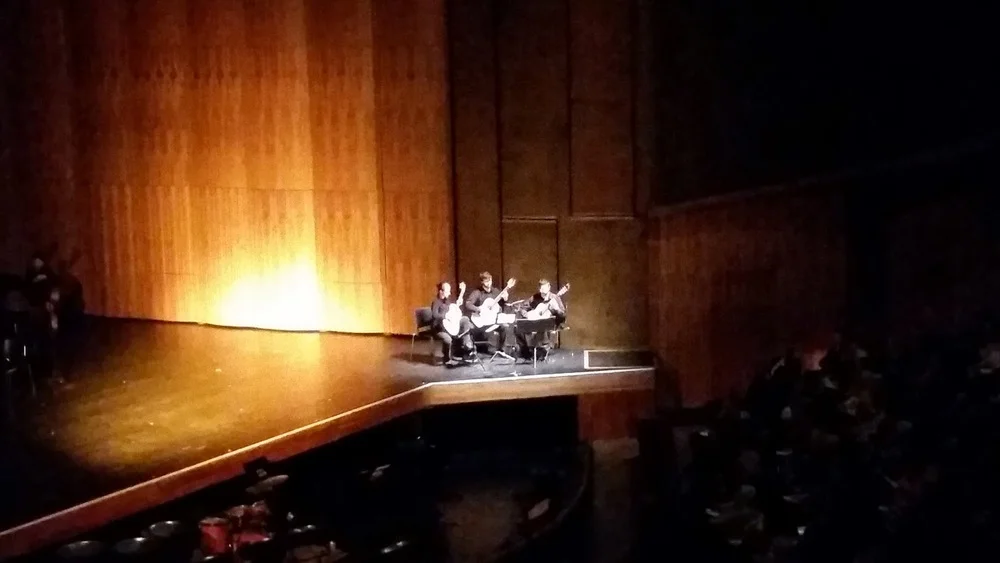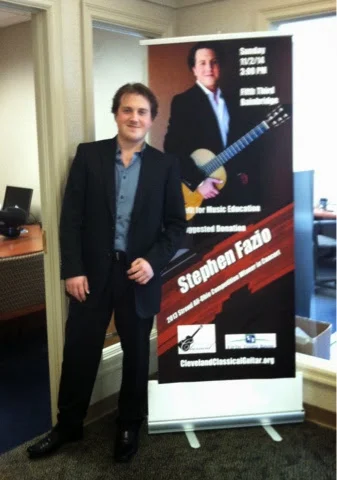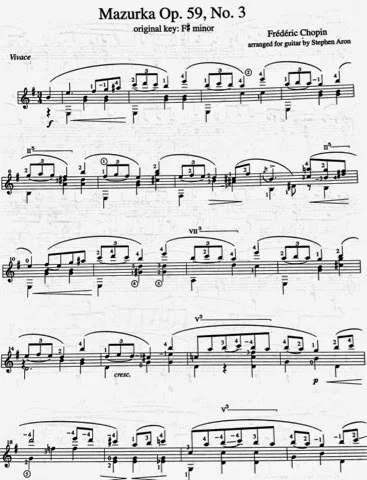Finger It Differently On the Repeat
In the course of working on our interpretations, we are constantly confronted with the challenge: how do we convincingly tell the story?
The story? I think of every piece as a story I want to tell the audience. Not literal stories, as in "this is where he tells her he loves her," but rather musical stories that have definite and unambiguous emotional content and the same arcs of conflict and resolution one finds in most short stories. The challenge is to bring the audience along with us on our musical story.
One compelling tool we have for helping tell the story lies in our fingering choices. Naturally, as we prepare pieces, we make fingering decisions all along the way. But when pieces have material that repeats, it can be effective to finger differently the second time. It might be as simple as playing a single note closed instead of open, or as elaborate as playing an entire phrase in a different position. But in either case, it will be nearly impossible to play the passage the same if it is fingered differently. And playing the same on repeats, as if the material were "cut and pasted," is something I try at all costs to avoid.
It's true that this practice is common and has famous precursors, notably Segovia and Bream. When I was coming of age as a guitarist, I found Julian Bream to be the most vivid role model; early on, I internalized many elements of his way of thinking about guitar, and certainly, creative fingering was part of that.
But in my current internal musical world, the examples are far more diverse. For instance, listen to a great singer interpret a strophic song by Schubert, one in which the musical material repeats over and over with different words: it is remarkable how many different ways they sing the same musical lines. They are truly telling a story (of course they have a text to lead them there). But the same is true of other great musicians. Listen to pianists, to string quartets. How many different feelings do they extract from the same material? The examples offered us by such models are both inspiring and instructive. Do we create musical arcs that are as compelling and unambiguous? Do we create an irresistible narrative that the audience can readily follow?
The fingering device suggested here is but one of numerous tools at the guitarist's disposal (see "
Emotional Content In Your Music
" for more on this topic). But it is one that is in many ways unique to the guitar. Fingering like this on occasion is a way of celebrating our instrument's voice. It is an embrace of the rich timbral world we inhabit. And it helps to tell the story.
I'll offer a few examples.
This delightful moment in Mertz's Liebeslied is played twice in the course of the first section of the piece:
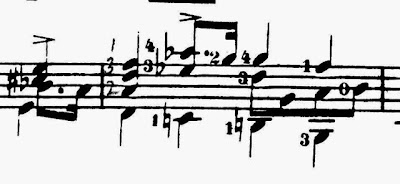
On the second pass, I like to modify the fingering like this:

The new fingering enables some both some lovely vibrato and a subtle portamento.
In this passage from Carora by Lauro (m13), it sounds terrific in both the first position and the fifth. I like using both:

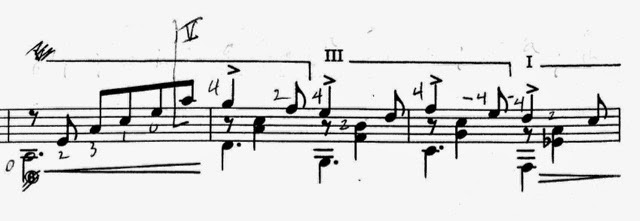
The character is just different enough to satisfy my desire to move the narrative forward.
Sometimes the tiniest change can have a salutary effect. Take for example, this moment during the first movement of Giuliani's Sonatine Op 71, No 2 (m11):

The second time, I'd do this:

The effect is totally different.
In the Mazurka-Choro from Villa-Lobos' Suite Polulaire Bresilienne, look at this passage (m10-11):

On the repeat, I like to play it this way instead:
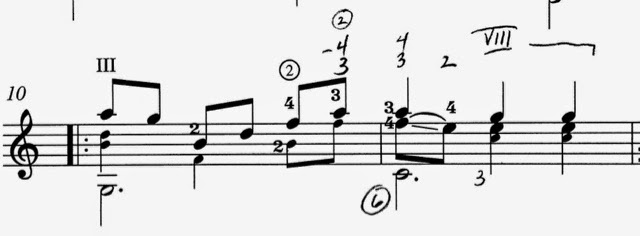
The change allows a lovely portamento and a different timbre.
In Barrios' La Catedral (Allegro Solemne), m63-64 is in a sequence that is repeated. Here it is as presented by R. Stover:

I also like playing it like this:

These versions each have attractive qualities but are very different. I use both.
As a final example, I'll offer Leo Brouwer's Berceuse. Here is one way to play it (m20):

And here is another:

Once again, I use both. (The high e in beat 2 of the first bar is meant to be played closed, with 4).
Where re-fingering is concerned, there is nearly no limit to the possibilities available. The point is not to be clever or cute, but to create a sense of forward motion in the interpretation. I don't re-finger every passage in every piece this way--there is no need. There are plenty of mechanisms for altering the sound at our disposal that stop short of re-fingering. After all, we can get a wide range of timbres in a single spot, we can slur or not, we can alter the dynamic level or shape, we can change articulation. But for that little extra push, and on occasion, there is nothing that beats playing the phrase in a different fingering.
Try it!


